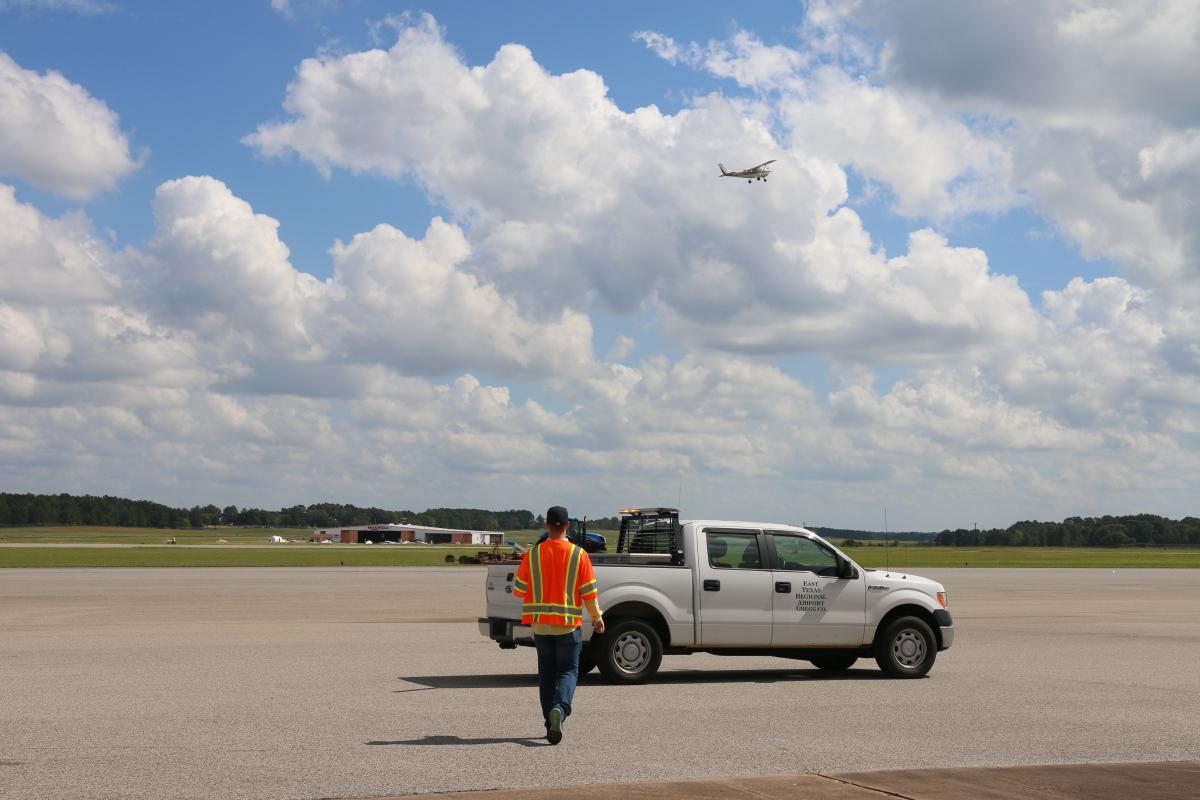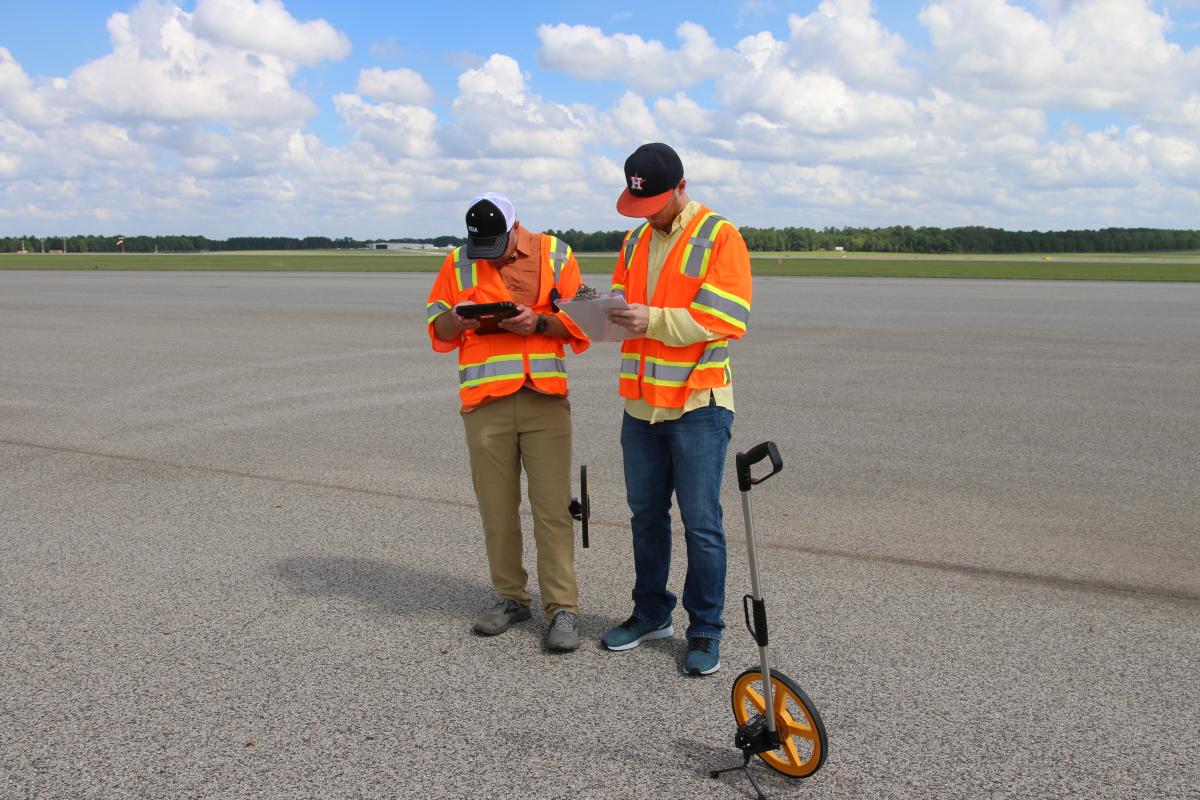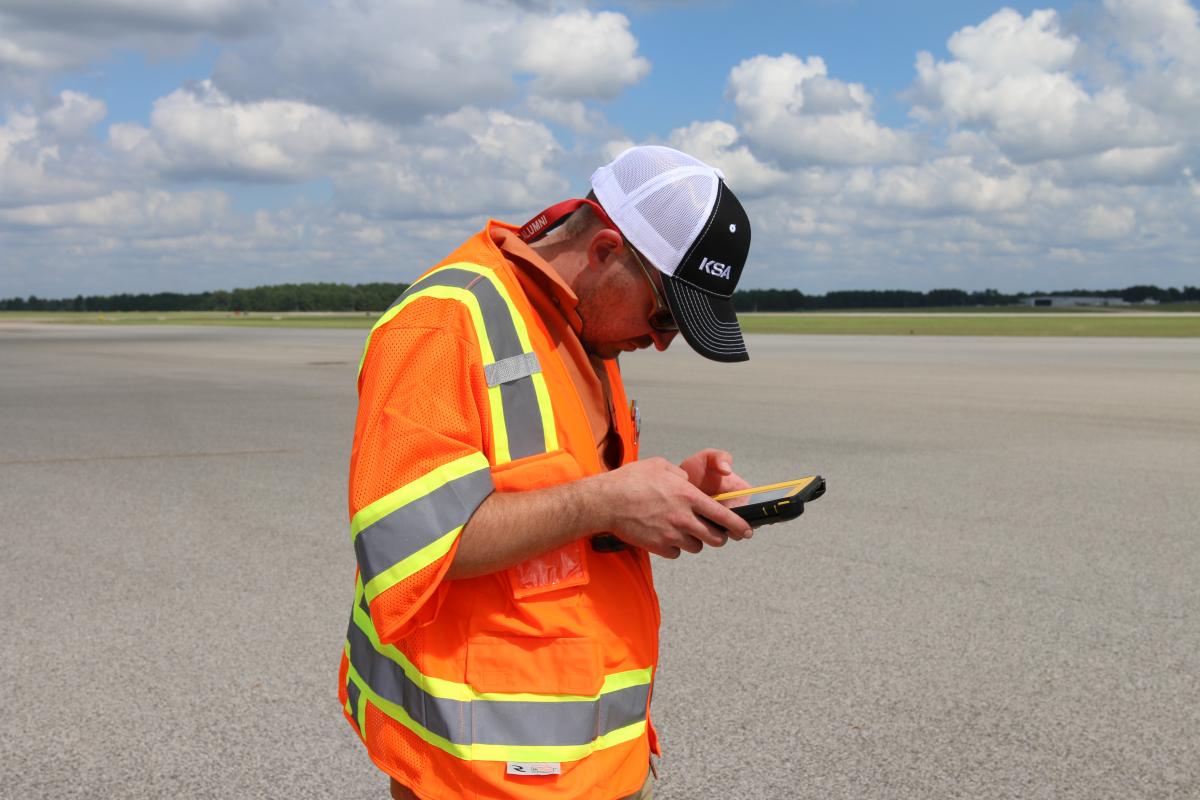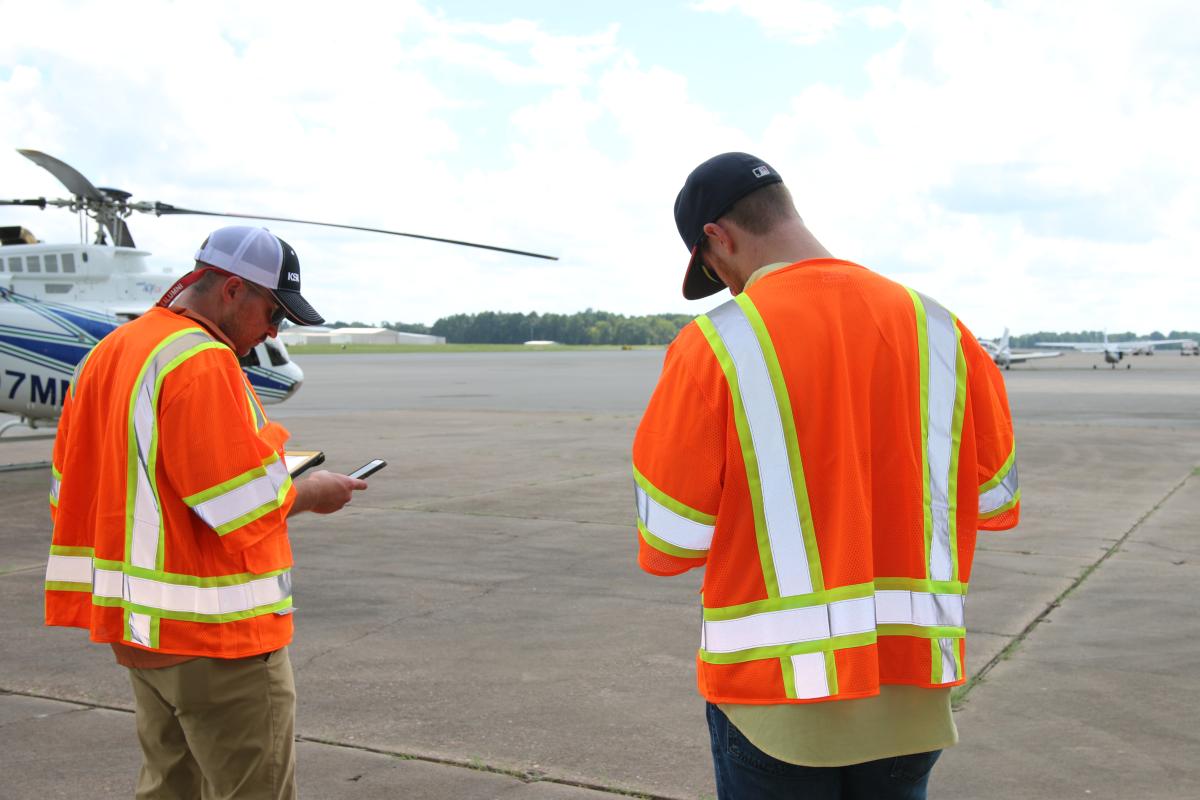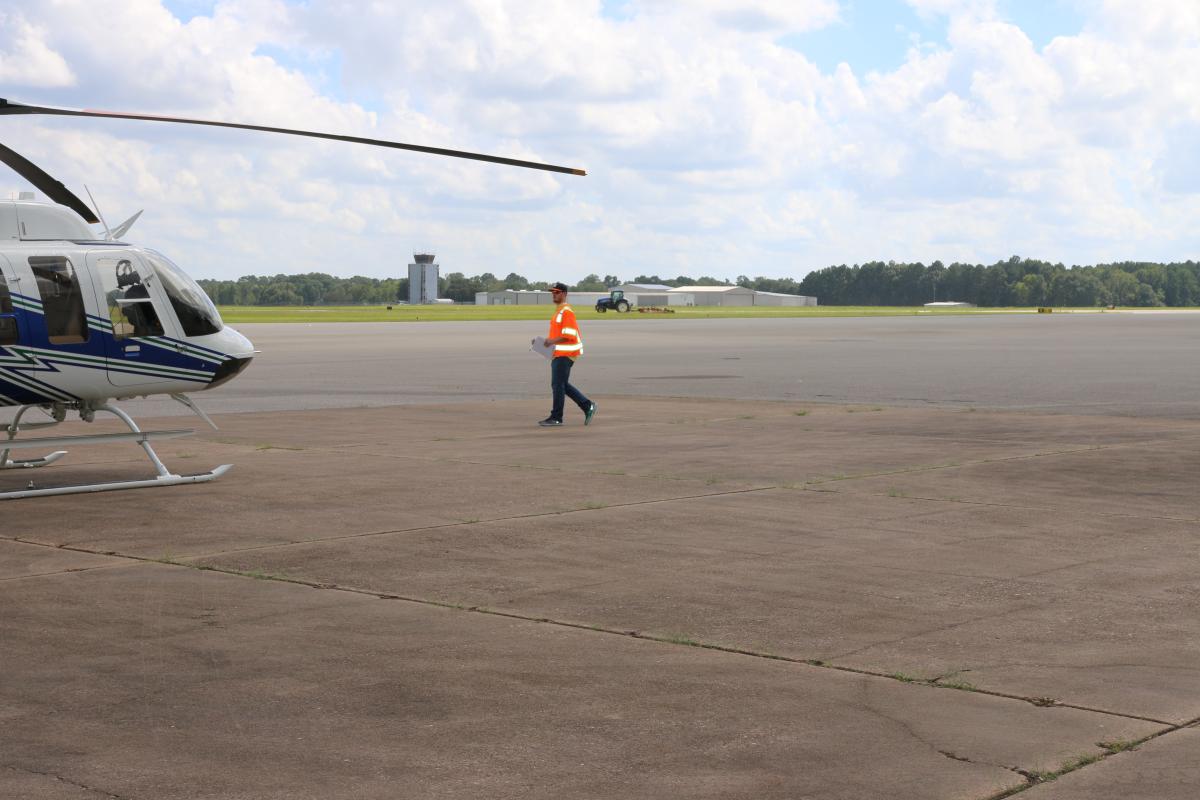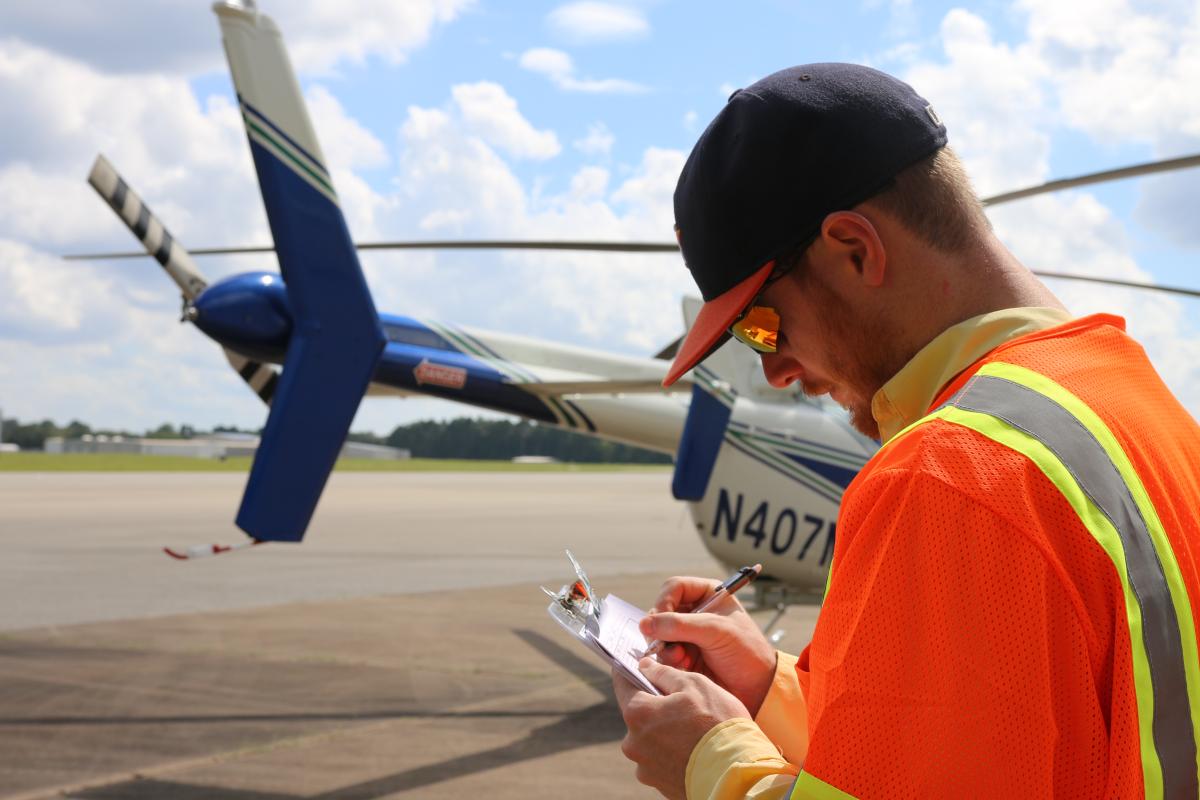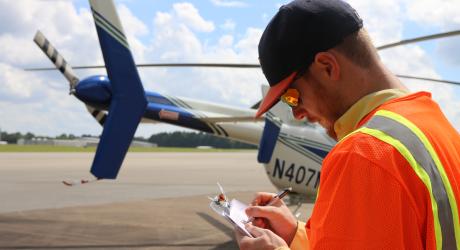
Pavement Management Program
KSA was requested by the East Texas Regional Airport to implement a Pavement Management Plan (PMP) and perform a pavement evaluation for their airside pavements in late 2018. KSA teamed with both Alliance Geotechnical Group, Inc. (AGG) and Dynatest to complete the PMP.
FAA Order 5100.38D “Airport Improvement Handbook” set forth policies and procedures which federally funded Airports are required to comply. One of the policies set forth in the handbook requires that airports must develop and implement an effective airport pavement maintenance management program (PMP). The PMP must include a pavement inventory, an inspection schedule, and record keeping procedures. Federally obligated airports must perform a detailed inspection of airfield pavement at least once a year for their PMP, unless a pavement condition index (PCI) survey is performed. Additionally, as a member of the International Civil Aviation Organization (ICAO), the FAA is required to report pavement strengths of all paved runways, taxiways and aprons at all airports. FAA regulations therefore require that all certified Part 139 airport publish Pavement Classification Numbers (PCN) and aircraft Gross Weight Data of all public-use paved runways.
According to the FAA Advisory Circular (AC) 150-5380-7B, “A PMP provides a consistent, objective and systematic procedure for establishing facility policies, setting priorities and schedules, allocating resources, and budgeting for pavement maintenance and rehabilitation. It can also quantify information and provide specific recommendations for actions required to maintain a pavement network at an acceptable level of service while minimizing the cost of maintenance and rehabilitation.”
KSA staff performed a visual distress survey in accordance with applicable standards (ASTM’s Standard D5340-12 titled “Standard Test Method for Airport Pavement Condition Index Surveys” and FAA’s AC 150-5380-7B titled “Airport Pavement Management Program”) to develop Pavement Condition Indices (PCI) on a scale of ‘0’ to ‘100’ for all airside pavements. The Dynatest staff performed heavy weight deflection (HWD) tests to gather pavement deflection data in accordance with the FAA’s AC 150/5370-11B to determine the Pavement Classification Numbers (PCN) of airside pavements including Runway 18-36, Runway 13-31, Taxiways A, B, C, D, E, L, M, N, the entire Terminal Apron and portions of the General Aviation Ramp. The PCN is a numerical representation of the load bearing capacity of a pavement section. A geotechnical subsurface investigation by AGG supported the non-destructive testing performed by Dynatest.
The obtained PCN data was used to perform an ACN-PCN analysis, comparing the PCN to the Aircraft Classification Number (ACN). The ACN is a numerical representation of the loadings presented by an individual aircraft. Every aircraft model has an associated ACN. The ACN-PCN analysis is designed to assist the airport operator with the evaluation of acceptable operations of aircraft. This same method was used by KSA to determine if the existing pavement structures were structurally adequate for the Airport’s fleet mix. If the pavement sections were found to be inadequate, a rehabilitation procedure was determined and recommended in order to bring the pavement up to required strength.
The East Texas Regional PMP provided existing pavement construction and rehabilitation histories, defined the method and procedures of pavement evaluation, included an initial assessment of the existing pavement conditions, and recommends a course of action for each section of pavement. Included with the assessment the airport was provide with both a PCN technical evaluation and pavement condition indices for their entire pavement system. These values were utilized and compared to one another to generate a Maintenance and Rehabilitation Plan for the Airport to utilize over the next 20 years.
